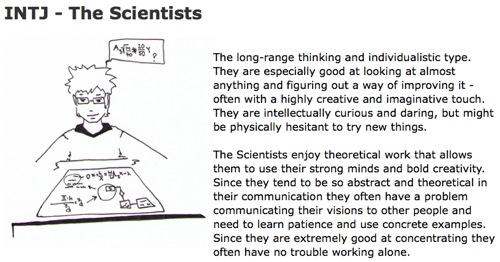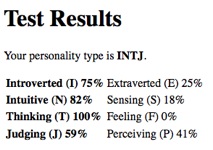 I’ve spent this afternoon and early evening at a ‘tweetmeet’. These are also known as ‘tweetups’ and are when people who have previously only met, or usually communicate, through the microblogging service Twitter meet up face-to-face. I’d actually met all of the people from the small tweetmeet we had today in Nottingham.* :-p
I’ve spent this afternoon and early evening at a ‘tweetmeet’. These are also known as ‘tweetups’ and are when people who have previously only met, or usually communicate, through the microblogging service Twitter meet up face-to-face. I’d actually met all of the people from the small tweetmeet we had today in Nottingham.* :-p
Such ‘unorganized’ meetings of people – TeachMeet is a similar, slightly more structured example – are the subject of this blog post. What prompted my thinking about organization was part of the discussion we had, foolowed up by listening to a Radio 4 podcast on the way home called Thinking Allowed. I suggest that you listen to it right now!
The whole point of organizations is to achieve something. These may be set in stone and known by all participants in the organizations, or there may be many (and possibly conflicting) objectives framed by participants. All organizations, therefore, have different degrees of productivity, both globally (as an organization) and, depending on their size, on a more micro-scale.
I say this because we discussed at the tweetmeet – which was itself a kind of exemplar – the concept of an ‘unconference’. This is defined by Wikipedia (as I write, anyway…) as ‘a facilitated, participant-driven conference centered around a theme or purpose.’ Our purpose, I suppose, was to discuss things face-to-face that we’d previously discussed online, and to get to know each other a little better. Then, on the way home, listening the Thinking Allowed podcast (above) it got me thinking more generally about organizational structures.
 Michael Thompson, author of Organising and Disorganising, talked about going on a expedition to climb the South face of Mount Everest. He explained how there were two separate groups – ‘Team A’ and ‘Team B’ – with the leader and middle managers (as it were) in the former group and the rest in the latter. He explained how this rigid hierarchical structure led to those in Team B, despite being experienced and highly-motivated mountaineers, adopting a chaotic, somewhat anti-organizational structure.
Michael Thompson, author of Organising and Disorganising, talked about going on a expedition to climb the South face of Mount Everest. He explained how there were two separate groups – ‘Team A’ and ‘Team B’ – with the leader and middle managers (as it were) in the former group and the rest in the latter. He explained how this rigid hierarchical structure led to those in Team B, despite being experienced and highly-motivated mountaineers, adopting a chaotic, somewhat anti-organizational structure.
The important thing, however, was that order in fact came out of this structure; order that depended on those involved. This is the thing that is missing in organizational planning these days: the role of individuality. Because, actually, someone who fulfils a role in an organization cannot simply be swapped-out for another person. The whole organizational structure depends on the talents, personality and individual attributes of that person. Change one part of the organization and the whole thing shifts. It may be a small amount in some cases – imperceptible to some – but a rearrangement and alteration does take place.
This helps to explain why organizations seemingly consisting of brilliant minds that should be amazingly productive and innovative fail to be so. An effective organizational structure is one that removes barriers and enables individuals within an organization to reach his or her potential. This, of course, cannot be at the expense of another, otherwise it is a futile exercise. One such way of going about organization, therefore, is to unorganize things, to mix things up a little.
So I’d encourage you, as Tom did me today, to once you’ve attended an unconference, to think about organizing (or un-organizing…) one of your own. You can’t really state in advance the specific things you’re likely to learn, but that’s part of the fun! I’ll leave you with a couple of things. The first is a Twitter message from @hrheingold which sums up in a far more eloquent way than I could ever manage the benefits of letting a little (controlled) chaos into organization:

The second is a link I came across, shared by Vicki Davis (@coolcatteacher), whilst writing this post. It’s called 8 Tips on How to Run Your Own UnConference. I hope that and this post change your thinking a bit and encourage you to think a little differently about organization, or the lack of it, and how it could impact the productivity of any organization of which you are part! 😀
* I knew Lisa Stevens originally from last year’s TeachMeet at BETT, Jose Picardo from an Open Source Schools event, and Tom Barrett from some work we did for a Becta-funded project into Web 2.0 in the classroom at Nottingham University a few months back. The reason it says #tweetmeet in the title is because on Twitter you can add tags by prefacing words with hash symbols. These then can be tracked by websites such as Twemes.com. You can see this in action on the front page of the tweetmeet.eu website!
Image credits: iPhone Matrix App -MoPhaic & Podcamp West, both from Flickr







 I’ve spent this afternoon and early evening at a ‘tweetmeet’. These are also known as ‘tweetups’ and are when people who have previously only met, or usually communicate, through the microblogging service Twitter meet up face-to-face. I’d actually met
I’ve spent this afternoon and early evening at a ‘tweetmeet’. These are also known as ‘tweetups’ and are when people who have previously only met, or usually communicate, through the microblogging service Twitter meet up face-to-face. I’d actually met  Michael Thompson, author of
Michael Thompson, author of 
![Reblog this post [with Zemanta]](http://img.zemanta.com/reblog_e.png?x-id=1b66070c-4dc5-47a3-ba33-2301c3ee4ed2)